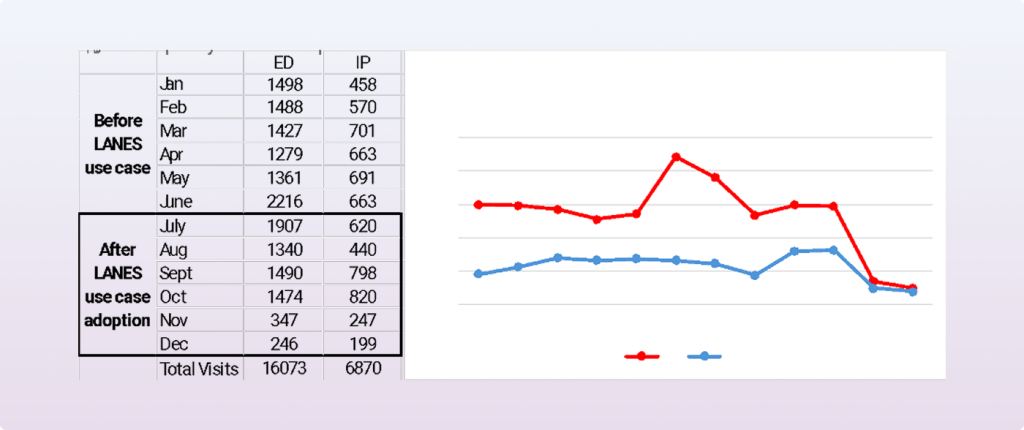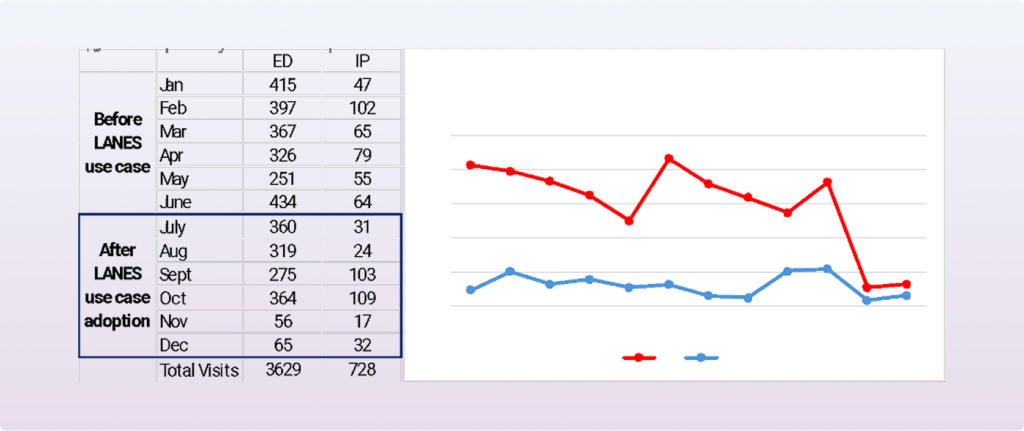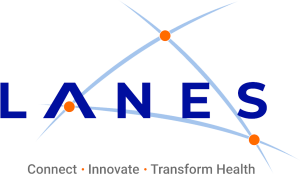Introduction:
Over six months (July–December 2024), LANES collaborated with Northeast Valley Health Corporation (NEVHC), a major FQHC with 17 locations, to enhance clinical management of diabetes and adult asthma—two high-impact diseases affecting underserved populations.

Background:
LANES has partnered with NEVHC to integrate LANES data into NEVHC’s workflow to reduce unnecessary emergency and inpatient visits for diabetic and asthmatic patients, many of whom are in risk contracts through NEVHC’s IPA affiliations.
Methodology:
LANES and NEVHC’s collaborated to support the diabetes and asthma care teams by:
- Processing Patient Rosters: 8,000+ diabetes patients, 2,000+ adult asthma patients.
- Embedding LANES Data in Workflow:
- Reviewing ED visits to determine if they were asthma- or diabetes-related.
- Checking NextGen EHR for prior diagnosis.
- Triggering clinical follow-ups:
- For diagnosed patients: Direct provider test action to the disease coordinator.
- For undiagnosed patients: Referral to Primary Care Provider for evaluation.
- Clinical Inclusion Criteria:
- Diabetes: Fasting glucose >125 mg/dL OR A1C >6.5% OR random glucose >200 mg/dL.
- Asthma: Age >18, recurrent symptoms (wheezing, cough, dyspnea), FEV increase ≥12% post-inhaler use.
- Regular Team Reviews: Weekly data utilization check-ins; monthly progress assessments.
Results:
In partnership with NEVHC, we were able to reduce ED visits for diabetic cohort patients by over 85% over a 6-month period. Similarly, we were able to reduce hospitalizations by approximately 68% over a 6-month period.
- Diabetes Cohort:
- 85% reduction in ED visits over six months.
- 68% reduction in hospitalizations.

For adult asthma, we demonstrated a reduction of 82% in ED visits and no significant change in hospitalizations for this cohort of patients over a 6 month period.
- Adult Asthma Cohort:
- 82% reduction in ED visits.
- No significant change in hospitalizations.

Conclusion:
By embedding real-time patient data into clinical workflows, LANES enabled NEVHC to improve care coordination, reduce hospital utilization, and enhance patient outcomes.
As LANES expands into care management support, disease-specific data integration can strengthen clinical decision-making, reduce patient leakage, and optimize healthcare resources, paving the way for scalable, high-impact interventions across diverse care settings.

